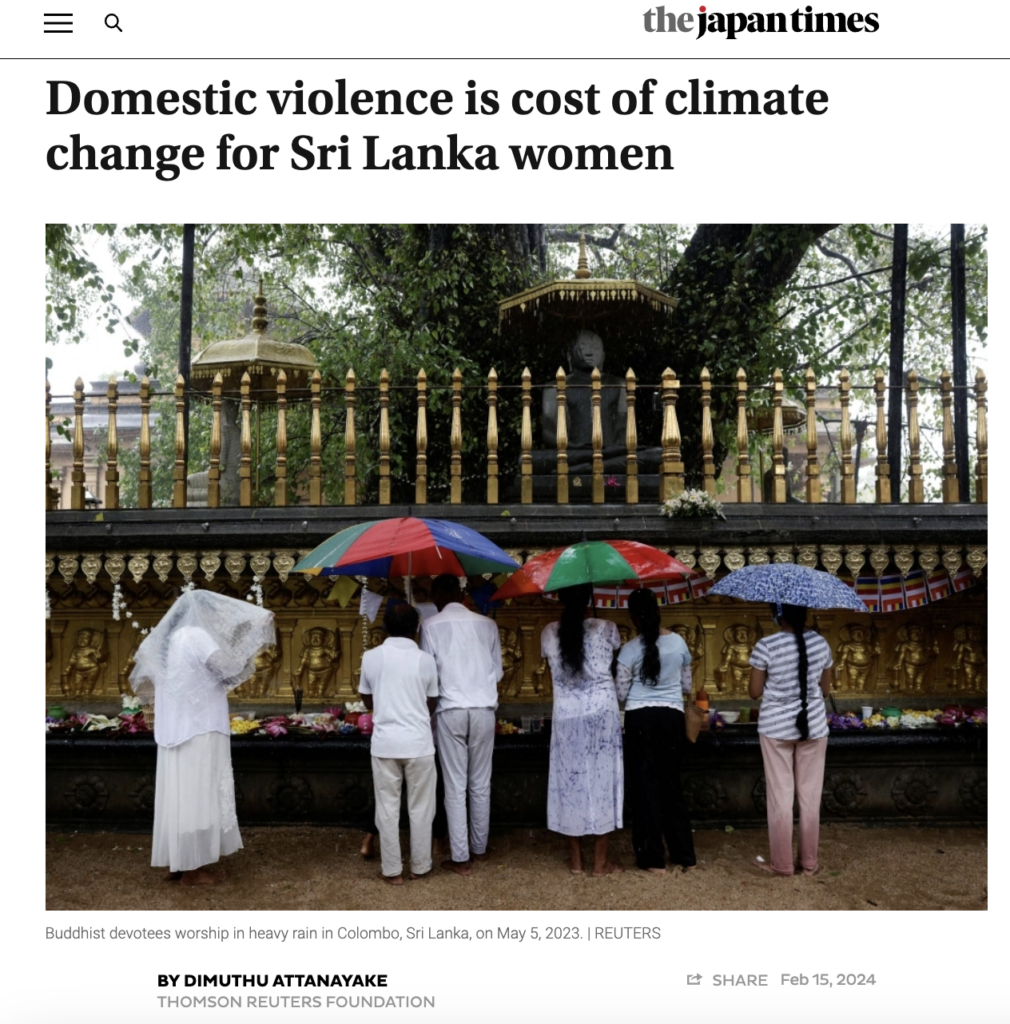BY DIMUTHU ATTANAYAKE
THOMSON REUTERS FOUNDATION
“I have got beaten up so many times,” Karunarathna told said in her village of Sapumal Thenna in Sri Lanka’s North Central Province. “I suffer a lot.”
Domestic violence is a little-studied side effect of climate change, especially in poorer nations where increasingly frequent heat waves, droughts, floods and storms can exacerbate economic hardship, which in turn can fuel anger and violence.
As families fall into penury because of failed harvests and lost incomes, researchers and affected women say men sometimes take their frustrations out on family members, with women often bearing the brunt of the violence, especially in cultures where such behavior is already commonplace.
Karunarathna said she and her husband would fight over little things and he would often hit her. She had to seek hospital treatment several times.
She did report some of the incidents to the police but was told to try to make peace with her husband “for the sake of the children” — a common piece of advice in conservative Sri Lankan society where domestic violence is relatively common.
Although Sri Lanka has few detailed statistics on the links between climate change-related crop failures and gender-based violence, Rashmini de Silva, a gender and climate change researcher, said when basic needs are not being met, women can suffer physical, verbal and psychological abuse.
“There are records of domestic violence where men beat their wives, when even the smallest issues in regard to buying food or expenses for children’s education or farming have to be discussed,” she said.
Sri Lanka is among the countries most affected by extreme weather events but even as it tries to build more resilience, it is still grappling with the fallout from its worst financial crisis in decades after a severe shortage of foreign exchange reserves shattered the economy in 2022.
It is estimated that close to 19 million Sri Lankans may live in areas that could become moderate or severe hot spots in terms of floods or droughts by 2050.






